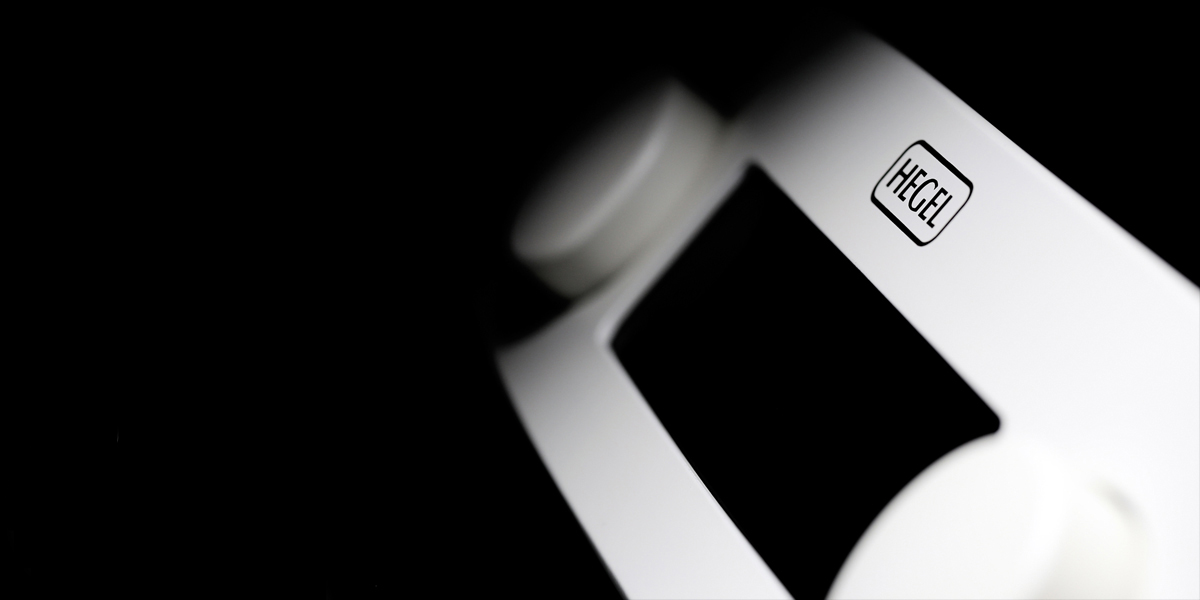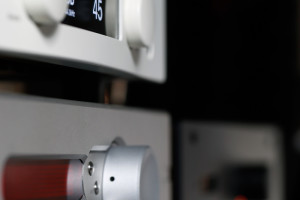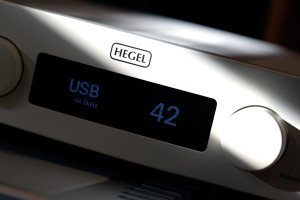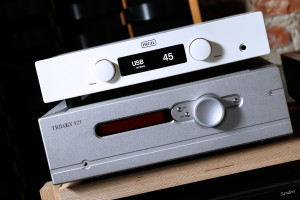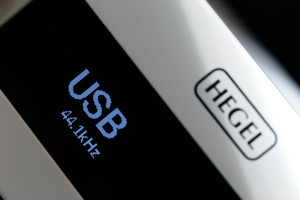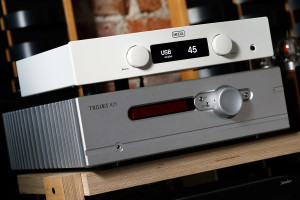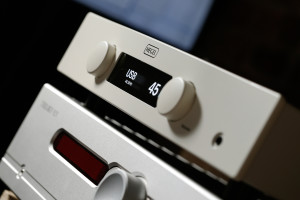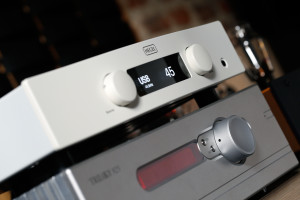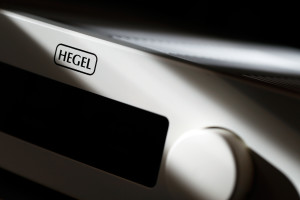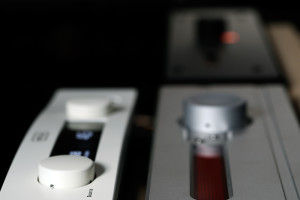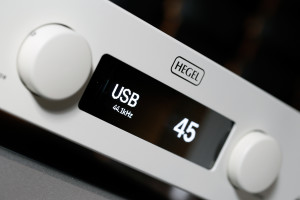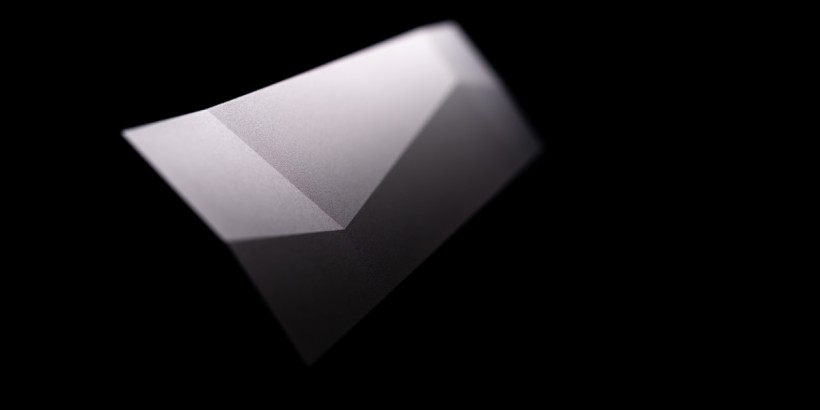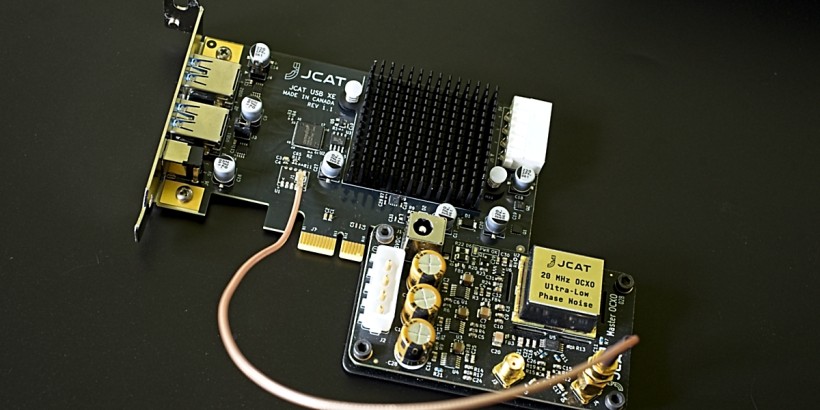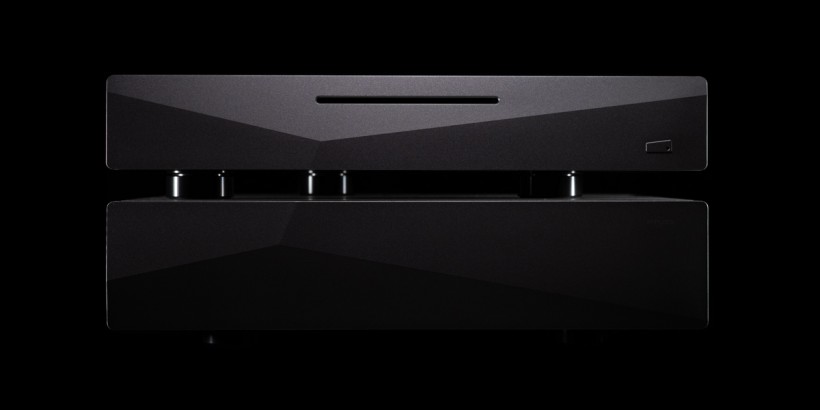There’s a valid theory that long time ago, Hegel’s CEO – Bent Holter – took The Rolling Stones’ “Paint It Black” lyrics a bit too literally. Said company’s devices are nearly always as black as night and its every enthusiast got used to this fact. Then suddenly, out of nowhere, a specimen as white as snowy morning on Alasca emerged and is this review’s main dish. Behold, Hegel Rost. Enjoy.
Introduction
It’s factually correct to say that Scandinavian products usually look minimalistic and peculiar, though in a good sense of these descriptive measures. Picture Finnish Amphion speakers or Norvegian Hegel electronics. Each has only what’s needed, no fancy stuff, or to put it even more plainly, their bling factor remains at zero level. The same story often is with sound quality. By that one should understand not over-engineered, showy sound, which represents safe performance level or is simply good enough and versatile to enjoy. The essence is in accommodation, though. To Amphion speakers one has to adjust often longer than usual and that’s the case with what Bent Holter does. My subjective point is that impressiveness from the get-go isn’t usually a part of the Scandinavian package. Products from this part of our world will slowly yet consequently grow on you, that’s a given. And once this process is over, you’ll feel simply happy and past this point the real appreciation starts. Northern style then? Yes.
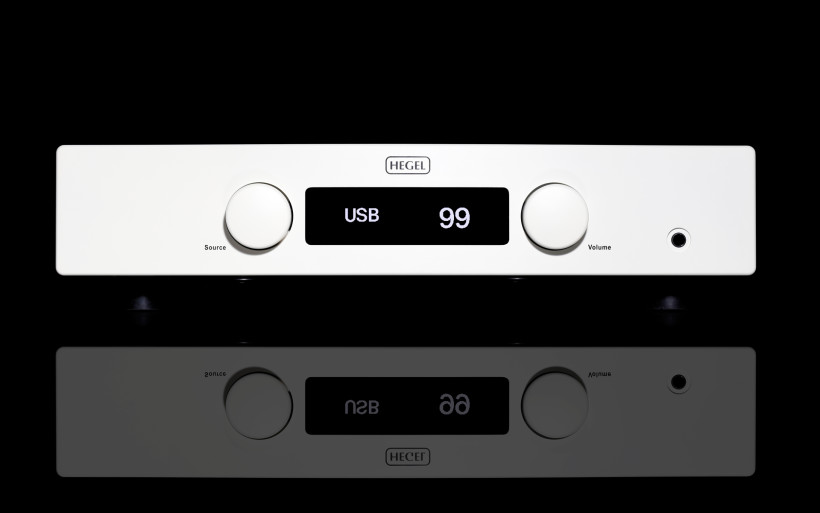
Despite of visually simplistic form, Hegel devices aren’t boring, on the contrary in fact. To create a design, which by simplicity itself can make one to admire it, is something to behold. After years of experience with Bent Holter’s products, and as the owner of several in the past, one subjective thing I know: he knows how to pull this one off. That’s one of several aspects he nailed. He had a visually appealing design from the very early days, he sticks to it consequently over the years and uses in nearly all of Hegel products. Characteristically wavy and clean front plate is one of said company’s trademarks. The same thing can be easily said about big display with blue marks and black finish. Is it all? No, far from it.
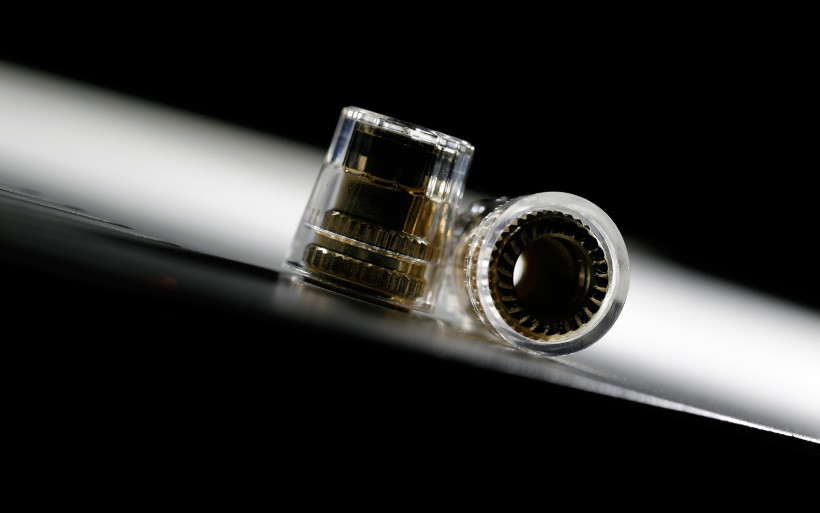
Hegel’s image isn’t and never was ‘audiophile’ only, this happened additively over the years. In this Scandinavian case it’s about balance more than anything else, which means proper care about design, sound quality and generous price to performance ratio, in order to reach as broad audience as possible. And to show the world that an audiophile product, yet of user friendly, the so-called casual nature can be made. Let’s add very stable and failure-free work to the tab, that’s also important. As the user of three Hegel machines (H70, H80 and H160), I’ve never encountered any problems with either of these. Not even once. To go Hegel route means to buy a product of great value in its class, refined and simply solid. Hence this company’s name is a synonym of honesty and reliability for this scribe. And both of these things aren’t too common in our hobby.

Everything changes though and this can be seen at Hegel camp as well. It isn’t drastic in our Norvegian case, yet visible. Mohican CD player appeared at first. Those of you familiar with classic flick with Daniel Day-Lewis surely know what this is all about. I strongly suggest to the rest to watch it as this is a very solid movie. Anyway, files ruthlessly dethroned black and silver discs. Perhaps this status quo isn’t that obvious on the highest shelf of audio, turntables and CD players handle themselves quite nicely there. Though even the priciest of Hegel offering doesn’t belong there. Far from it. In any case, Mohican does only Redbook material, namley 44.1 kHz CDs. No SACD or any other. To make this kind of a vanilla flavored machine these days? Surely that’s a ballsy move right there, yet the question remains. Who knows? Perhaps Bent wanted to make his final CD based move and never look back? Perhaps that’s why his latest CD player is named after Nathaniel ‘Hawkeye’ Poe? And there’s strangely familiar, yet white Rost. But rest assured that its color serves merely as a tip of the iceberg.
Build
A quick glimpse at Hegel offering is more than enough to see, that just numbers and single letters are used in order to describe said company’s products. Scandinavian minimalism and mystery undoubtedly. Moving on along those lines, H is reserved for power amplifiers and integrated solutions, CDP is obviously visible on CD players, whereas preamplifiers get P. Over the years only one exception was made for portable DAC/amp combo known as SUPER, which is discontinued for some time now. And during the last High End event in Munich, two new products were shown, both with their unique names. The Mohican case is covered above. What’s left is Rost, which simply means ‘voice’, no more and no less. But also one of Lofoten archipelago islands bears the same name. It is said to be the most beautiful, though I can’t say as I’ve never been there. Yet that’s possible, Norway is a magnificent and visually impressive country after all.
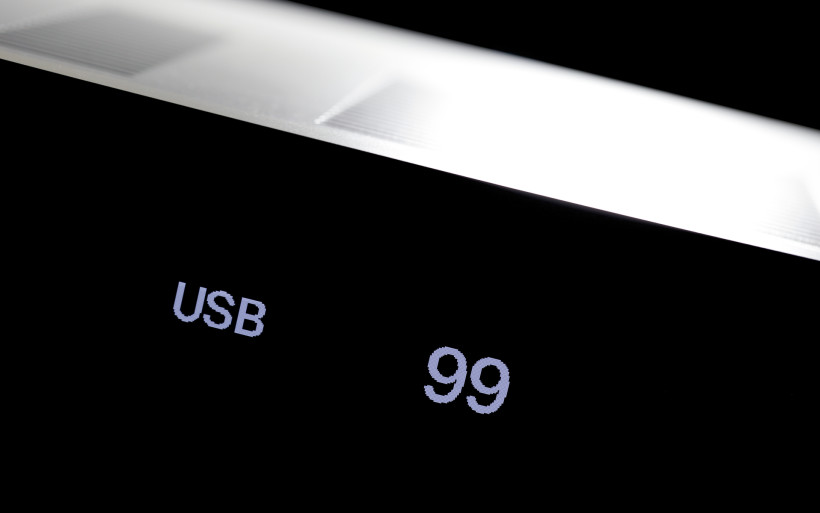
Rost is a complete solution, which translates to an integrated amplifier which has very limited needs. Just plug in a set of speakers, a transport of your choice and you’re good to go. This machine is also loaded with Apple’s AirPlay and can be a part of an intelligent home automation system known as Control4. This software gives one access to energy, lightning and entertainment via one simple app. Hegel folks thought that to integrate Rost in said environment is a good, futureproof idea. Again, I can’t say how things work in practice. Yet knowing how well-designed Hegel products are, the safest bet is that this machine handles itself quite nicely in there.
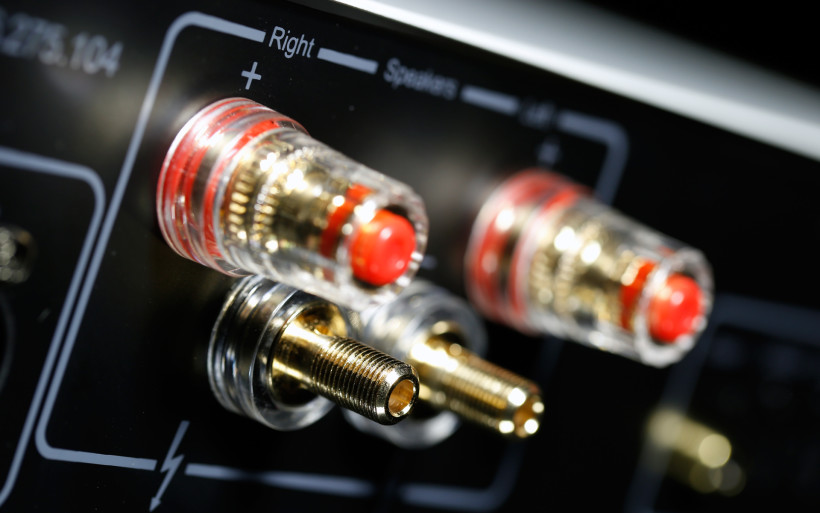
Rost’s place is among other integrated amplifiers, namely H80, H160 and H360 models. Price wise, this deck sits a bit below H160, yet build wise it resembles H80. But something else is on, let me explain. Hegel is one of manufacturers, which always make rather big quality jump from one model to another. That was the story with H70, H100, H300 and their respective successors. In short, the newer model, the better performer it is. Therefore the theory that Rost is merely upgraded H80 and nothing else is very misleading. One needs to dig deeper into this topic, look for answers in Hegel latest’s innards at first and then in said deck’s performance. That’s the smart play. Hence the mail to the Rost manufacturer directly was sent and valuable reply came shortly after. It turned out that our machine doesn’t have much things in common with H80. The former allows Tidal and Quobuz streaming for Android based devices via Blueupnp and AirPlay in Apple’s case. But what’s more important is the fact that Rost’s d/a conversion and output stage is the same as in H160 and H360. Though the latter aspect has H80 topology. In addition, patented SoundEngine tech is now 50% more efficient in terms of distortion and product’s damping factor rose from already impressive 1000 to twice that. Rost delivers 50% more current that H80 and it’ll play with full force longer without going into standby.
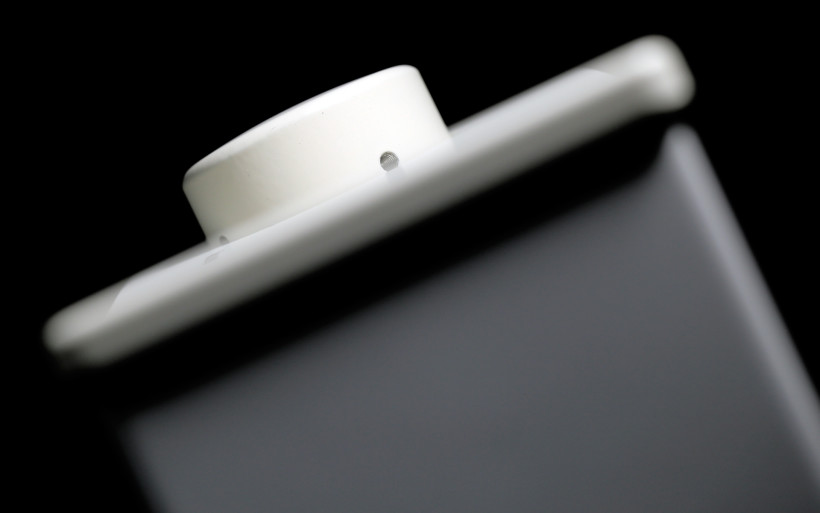
White as a snowflake, Rost’s chassis is peculiar. Its front is in one ‘shade’ of said colour, whereas the rest of enclosure is slightly different. Picture Adobe 255 255 255 RGB palette versus 248 248 248 or something of this sort. Said difference is small, yet noticeable and done on purpose. It makes the product’s look more threedimensional and it works. But the RC is… black. Why so? That’s simple. If it would have been white, after several months of extensive usage, which is perfectly possible, it’d look dirty as this is unavoidable. Said remote is Hegel’s RC8 controller, found i.e. in H160 or H360 models. To my surprise, its volume control and input switching buttons worked with Trilogy 925.
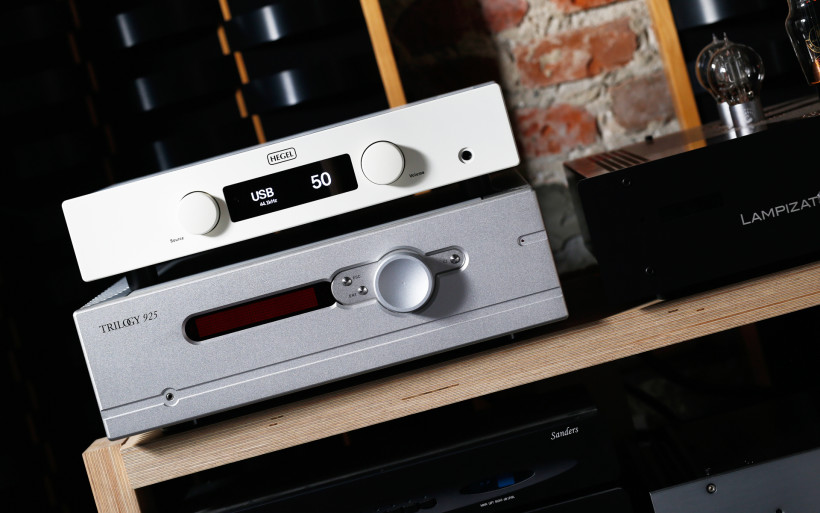
Rost’s enclosure is almost identical as the one used in H80. The product measures (H x W x D) 10 x 43 x 31 cm and weighs about 12 kilograms. Said numbers make it small yet rather heavy. Frequency response starts at 5 Hz and ends with 180 kHz, crosstalk and SNR numbers are -100 dB and 100 dB respectively, whereas 75WPC into 8 ohms load makes Rost quite strong. Our machine’s front is familiar, namely made out of thick aluminium slab, slightly cambered in the middle and loaded with two knobs. The one on the left is an input selector, whereas the other one handles volume control duties. Rost is the very first unit which sports OLED based panel with white marks on a perfectly black background. Every letter and figure is slightly dimmed, in order to be more readable. The info shown there is as follows; active input, vol. level (0 to 99 scale) and playback resolution. New display is much better in comparison to earlier models. Ah, Rost is also loaded with a 6,3 mm headphone out, that’s H160 legacy.

Rost’s rear is crowded. It sports regulated pair of RCA outputs on the far right, two additional pairs of inputs in the same standard sit nearby and there’s another one a bit more to the left, this time XLRs. Large speaker posts with acrylic and translucent caps in our deck are quite familiar as these are seen in virtually any other Hegel product out there. Every cable will find its way with no issues; bananas, spades, bare wire, you name it. Digital section is based on six inputs in total; one coaxial, three of TOSLINK sort, one USB type B and one RJ45. The last one is required in order for Rost to be used via AirPlay and Control4. IEC socket on the far right seals the deal. Our deck’s top cover is perforated, which is mandatory as this device can get hot. Three rubber and rather tall feet sit on Norvegian machine’s bottom. Even though the initial impression is that it doesn’t look like it, it’s in fact stable as a rock. I have no idea how much juice class AB based Rost needs under heavy load, though in standby mode it takes no more than 30W. And because of its rather generous connection options, said deck can work as a standalone DAC only, preamplifier or a stereo power amplifier. Even though the initial intention was to use it as an integrated.
Sound
When Rost came, no comparable integrated sat anywhere nearby. Though it wasn’t an issue for this journalist as lots of other toys to play with is the usual status quo in his manly cave. Swiss Boenicke W8 were mandatory, just to find out how Norvegian deck will handle difficult load. The isolation of its functions was on the to-do list as well. To conduct this task, Sanders Sound Systems two-piece set and LampizatOr Golden Gate were used. Past all these exercises it was time to find out how Rost fares as a one-box solution. Here Trilogy 925 came into play. Here’s what’s happened.

Before we’ll go any further with this story, a word of explanation about Rost’s unfortunate, much pricier competition. Why to bother and put it in a cage with times more expensive rivals? Well, the answer is as per usual, to establish this newcomer’s real value. The insight about whether it’s worse and by how much if so, is one of the most important things. After all, ‘giant slayer’ stories are told all across the audio world. But in order to name a specific brick as a mythical David, one needs to witness what’s what on an alive organism. To dissect, combine and triangulate, as one wise man once told me. Yes, this approach takes additional time and often lots of it in fact. Yet if said stunt can be pulled off, there’s no valid reason to not give it a go.

Sanders Sound Systems Magtech and a dedicated preamplifier combo came in as Rost’s first, five times pricier opponent. Our newcomer’s digital part was used and merely two things needed to be done to switch from one chain to another. Speaker cables were swapped and a mild volume adjustment on Rost was done to match the same SPL value. Quick, easy and painless operation. In both cases the same DAC was used, the one in Rost.
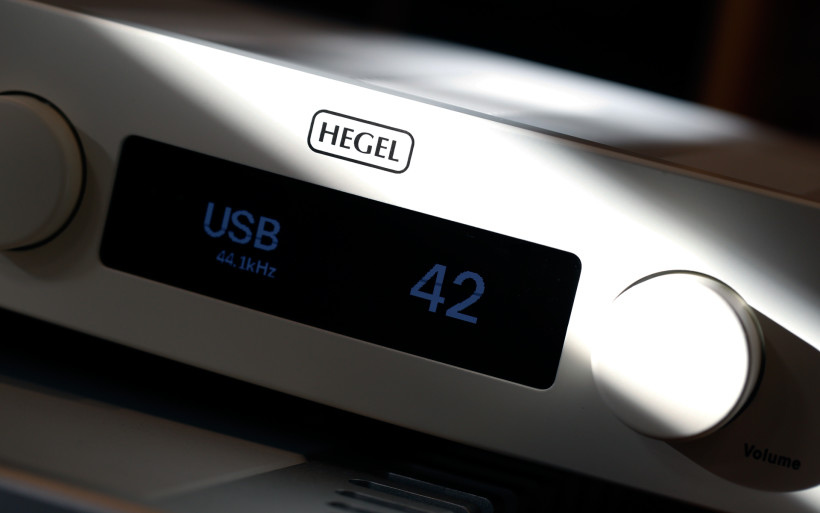
The American part of the setup performed linear and neutral, both saturation and tonal balance were in check. It’s safe to say that Sanders Sound System deck sang about the ‘truth’ and by that one should understand well-pronounced character of speakers and a source. Every cable related combination was also quite audible. Perfect journalistic tool, then? For the sake of usability, yes. So, how Rost performed against such truthful competition? In short, it defended itself nicely. One of fundamental differences between this deck and its American rivals was in tonal balance. The former had it shifted a bit upwards and less present bass was the very outcome. And that’s why the latter turned out to be more muscular, fuller performer, but that’s not all. Rost also sketched more contour, precise and clearer picture, hence more detail oriented and swifter spectacle was the audible effect. And even though Norvegian deck was thinner, to say that it was outperformed would be a major exaggeration. To many of you this would be the case of apples and oranges. The floorstanders used have an enormous impact on the performance. Yet rest assured that Rost took a proper care of W8. Punchy, feisty and overall strong sound was the outcome. The sheer drive was there, no wobble in the downstairs department occurred. Not even once, bravo.
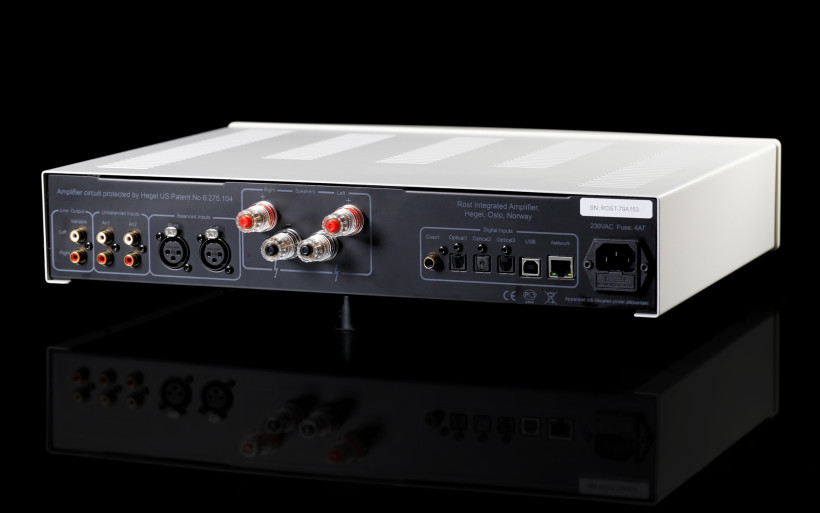
Boenicke Audio W8 are capable of creating a marvelous imaging; airy, multilayered, plainly big and exceptionally precise. These features were heard in both amplifiers’ cases and this fact alone makes a true quality performer out of the quite affordable Rost. Though there were some differences. American power amp and matching preamplifier made the sound more organic and present. It was also very wide and the clarity of distances drawn to single instruments was nothing short but spectacular. The centre of the stage was subjectively in a spot on place, whereas all events presented on both sides could be literally touched when needed. That was the American approach. Rost handled imaging differently. It showed more distance to the soundstage and also focused my attention on what was going on between the speakers. But if there was necessary information in the recording itself, Rost was perfectly capable of painting big and present images on the sides. At times surprisingly far, yet always clear. This is neither an advantage nor a flaw, but merely an observation. The gist is that said machine is able to deliver such amazing things. To put it more bluntly, it simply has a potential to serve the sound big, coherent, involving and as far from dullness as it gets, which this journalist highly appreciated. To my great surprise, Rost straight out of the box filled tightly the wall more than two meters behind W8 speakers with the sound clear, big and present. Many individuals would nod their heads in disbelief. Yet it happened and rest assured that not every amplifier out there is capable of pulling off imaging this impressive. Yes, it was heard that American two-piece set i.e. had better decay and more differentiated highs, whereas Rost was in that regard shorter and shinier. But minor matters of this sort aside, the latter made helluva impression. Despite of its clear character, it didn’t present itself from overly dry, skinny or matte side.

The next stop on the Norvegian roadmap was Rost’s volume control. In order to check what’s what, Sanders Magtech amp was driven by its dedicated standalone preamp or the one built into Hegel’s latest. The d/a section remained the same. It may seem that tests such as this are a waste of time. But if a manufacturer declares that a volume control is a feature which gets the biggest improvement from one iteration to another, it’d be a mistake to not have a say in this matter. In short, the American preamplifier turned out to be more showy performer, in a sense that it sported extra expansiveness, bigger imaging, more air and the very first row closer to a listener. Said machine’s usage also netted the faster, feistier and vibrant outcome overall, with slightly elevated highs. Again, Rost defended itself nicely. It represented calmer, a tad dimmed in comparison, smoother and more intimate approach. Apples and oranges then? It appears so as said Norvegian integrated wasn’t flawed in terms of resolution, precision or punchness decrease. Yes, it was lighter downstairs and slimmer overall. But let us think about it for a second. To have an outcome with a rather affordable integrated’s built-in volume control smoother than… with a separate preamplifier of nearly $5’000 asking? Yup. And on a purely subjective level, this scribe was more pleased with the outcome once the American preamplifier wasn’t a part of the chain. At least that was the case with W8.
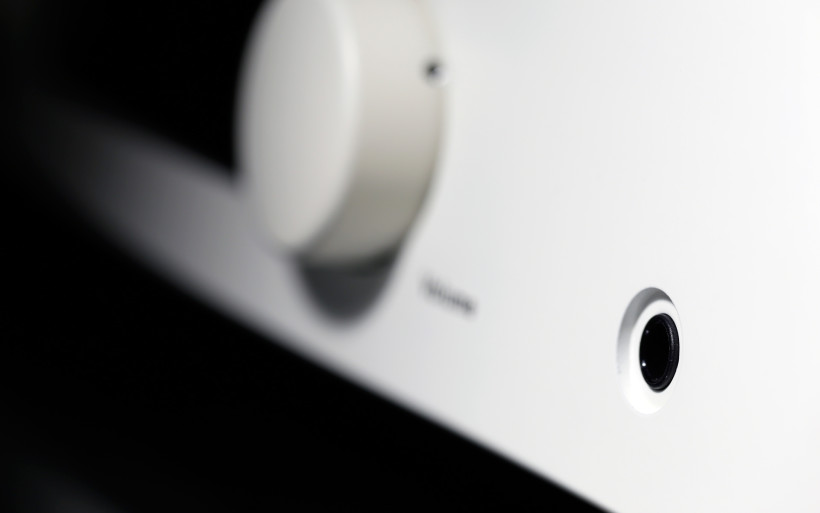
Rost’s d/a conversion was next in line, Polish Golden Gate marvel awaited calmly. The former’s pre and amplification circuitry was used constantly, so were W8 speakers. It was all about DAC section swaps and nothing else. In short, Polish product played it more massively, that was heard right from the get-go. Once it’s loaded with KR 5U4G rectifier, I honestly haven’t heard a bass better than this and by a long shot. It’s simply grand; differentiated, really low, marvelously controlled and colorful. Subjectively there’s no valid reason to add or subtract anything. Rost handled itself again, yet for the nth time it was heard that it sounded lighter. It generated slightly smaller soundstage with differently placed instruments there too. But the key difference was in organic, lifelike approach. In this regard in particular, Golden Gate performed in much higher league. But…
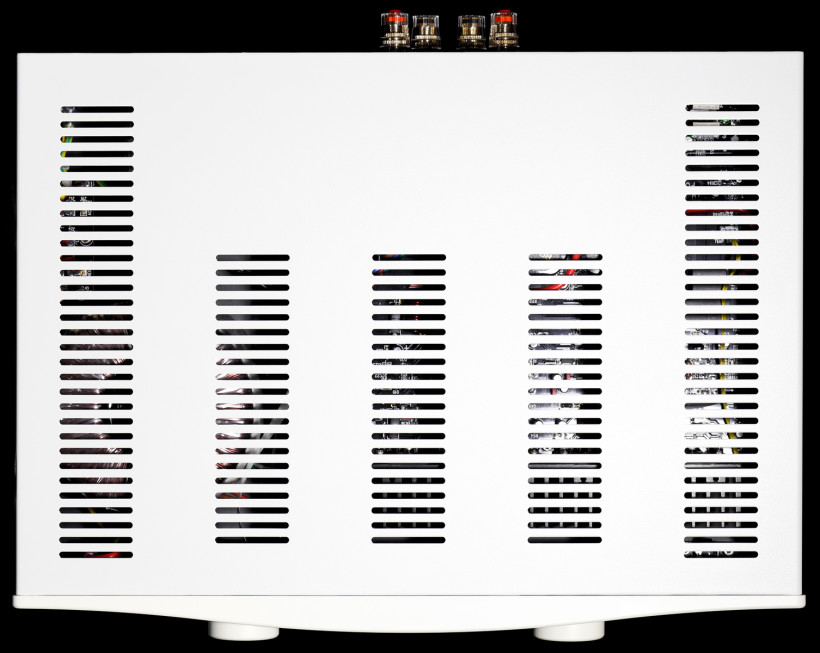
Norvegian integrated played it calmer in comparison to Golden Gate, lighter and not that tight, that’s true. The differences in sheer lifelike approach, this so-called audiophile tangibility, undoubtedly were present too. Yet it’s undeniable that Rost maintained a very high resolution level and the same story was with imaging overall. Again, it didn’t fell into dullness, on the contrary in fact. This machine’s analogue alike character was always present. And past the Golden Gate experience it’s safe to say that the former’s d/a section bears this fine mark too. In the end, a quick switch from the Polish champ was noticeable, yet not painful at all. After taking humongous price difference between compared products, that’s plainly good. And since Rost’s DAC doesn’t fall short in terms of spaciousness, order, resolution and many other things, I consider it as decent to say the least.
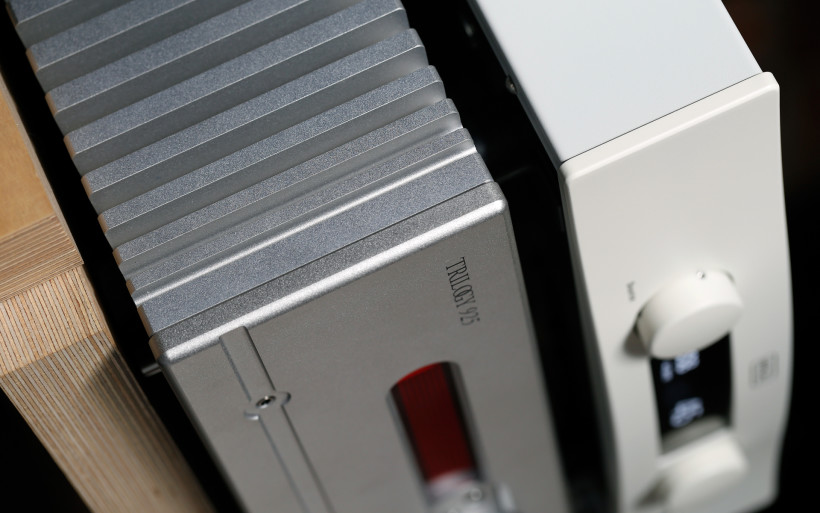
After every experiment described above, it was high time to conduct one final test. This time Rost all alone had to fight for its life against LampizatOr Golden Gate and Trilogy 925 duo. Each setup performed with Boenicke W8 of course. To be perfectly honest, this skirmish was unnecessary, Rost was able to prove its worth numerous times thus far. Yet for the sake of the facts it had to be done, just to witness whether the Polish/English setup of 13 times Rost’s coin is worth its asking. So is it? In this journalist’s humble opinion yes. His reference setup performed much more effortless, expansive and vivid. But also more tangible, muscular and tighter. It was substantially better overall, no questions asked. Yet the most interesting thing is the scenario when this scribe swapped his daily setup and used Rost instead.

The gist is that a switch from highly synergistic setup to Rost wasn’t painful at all. Again. On the contrary, past early accommodation this deck is simply a joy provider. The more time I’ve spent with it, the more I appreciated its smoothness, vividness, pleasantly calm attitude and – still – grand imaging. If it wasn’t for every exercise conducted above, what to add or subtract in Rost case to make things even more interesting would be in order. But after last test let me just say that this machine is a finished product, well-seasoned, without obvious weak links. And that enabled me to simply enjoy this package as is. After all if one is happy that in a track or two he’ll listen to this deck again, instead of slowly going into ‘arghhh’ mode… you get the picture. Hegel’s latest indeed is a very valid reason to be happy. Let me point out again that this integrated is an analogue, spacious and precise performer, which happens to have a marvelous control over given load. It behaves like much more muscular product in that regard. That’s the obvious upshot past this reviewer’s experience with difficult W8s.
Summary
In the past I was very impressed with H80 and H160 models, yet in Rost case this isn’t enough. This is a great product. Not only it left the battlefield with a shield past confrontation with pricier rivals, but also proved to be properly polished. It’s really difficult to single out one weak link of this integrated, it handles itself nicely from every angle. And that indicates the job well-done on an engineering level.
Hegel Rost is very well-made. Functional and appealing OLED display surely is a step in the right direction. Numerous inputs make this deck undoubtedly flexible, though this aspect never was an issue in Bent Holter’s work. In any case, Rost has everything needed to multitask, its network options will make many people happy. And said machine subjectively looks good in white.
Though the most important aspect – sound quality – leaves no doubt at all. Rost is very good in this regard. It simply avoids flaws typical for similar integrated solutions; neither it sounds dry, nor overly fuzzy. Though it’s slightly closer to the first profile, it balances somewhere in-between and adds impressive, analogue alike smoothness, big imaging, calmness and – when needed – impeccable control over given load, which manifest as swift and punchy sound overall.
Factors above indicate that Rost is honestly priced and rightfully so. If a machine of similar profile is needed and up to €3’000 can be spent, to give Hegel’s latest a shot is mandatory. Not to mention that Rost serves as a very solid proof that Norvegian engineers are perfectly capable of marrying audiophile sound with modern design and grand functionality, which doesn’t happen that often in the audio nature. My sincere congratulations and ’till next time.
Associated equipment:
- Amplifier: Trilogy 925, Sanders Sound Systems Magtech + preamplifier
- Sources: Lampizator Golden Gate (Psvane WE101D-L + KR Audio 5U4G Ltd. Ed.)
- Speakers: Boenicke Audio W8
- Transports: Asus UX305LA
- Speaker cables: Harmonix CS-120 Improved
- Interconnects: Forza AudioWorks Noir
- Power supply: Gigawatt PF-2 + Gigawatt LC-2 MK2 + Forza AudioWorks Noir Concept
- Rack: Lavardin K-Rak
- Music: NativeDSD
Retail prices of reviewed components in EU (excl. tax):
- Hegel Rost: 2’490€
Manufacturer: Hegel


